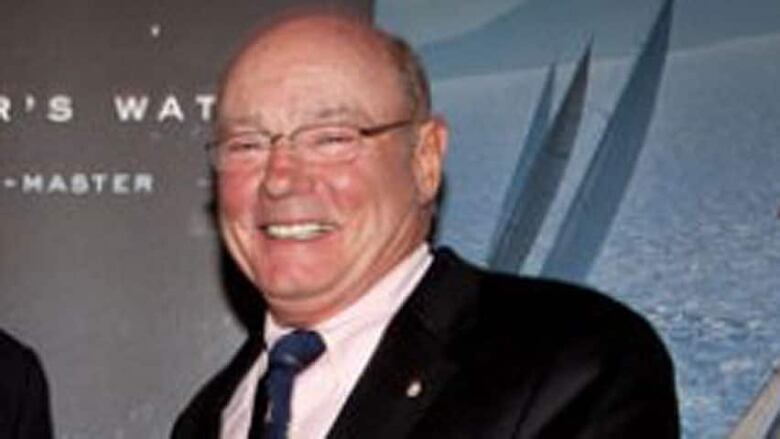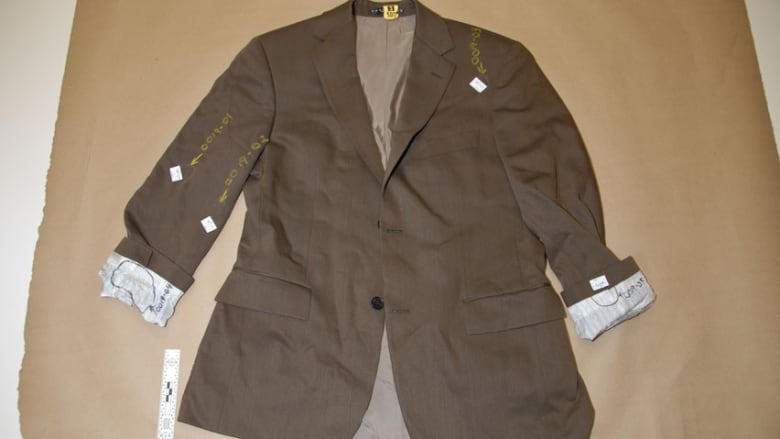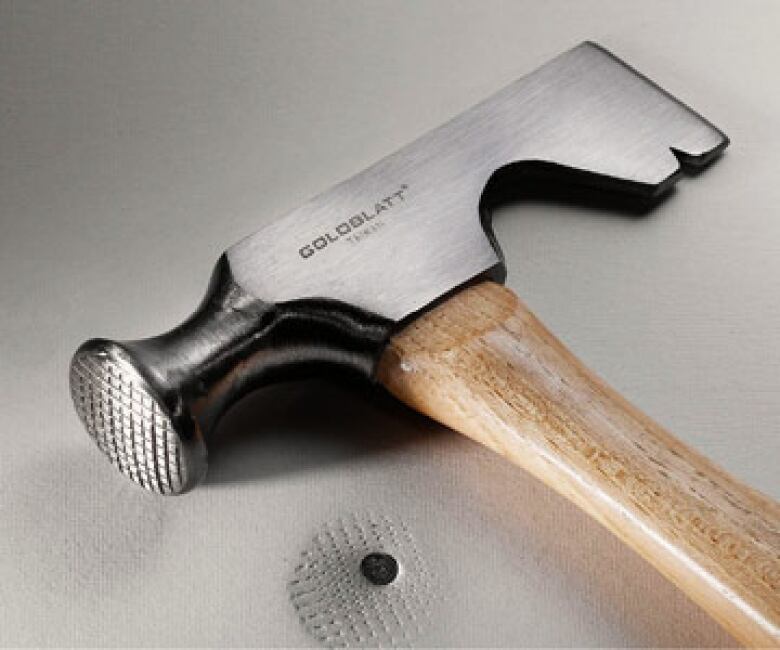Dennis Oland's murder trial nears end of prosecution's case
DNA experts to testify next week about blood on jacket that Crown says matched Richard Oland's DNA profile

Crown prosecutors will soon wrapup their case against Dennis Oland in the 2011 bludgeoning death of his father, prominent businessman Richard Oland.
The prosecutorsarescheduledto call theirfinal witnesses in the second-degree murder trialnext week.DNA experts willbe among them.
The accused'sthree-member defence team is then expected to present itscase.
It's not yet clear whether their clientwill take the stand in his own defence.

The multimillionairehad suffered 45 blunt and sharp force injuries to his head, neck and hands.
Dennis Oland, 47, who was the last know person to see his father alive during a meeting at his office the night before, has pleaded not guilty and is standing trial before a judge and jury in the Court of Queen's Bench in Saint John.
DNA experts from the RCMP forensics labare expected to testify abouta key piece of evidence in the Crown's case against Oland a blood-stained brown sportsjacket seized from his bedroom closet.
Lead Crown prosecutor P.J. Veniot said in his opening statement to the jury that the jackethad four areas of blood on it that matched the victim's DNA profile.
Oland told police during a voluntary statement on July 7he was wearing a navy blazer when he visited his father on the night in question, but security video of him earlier that day shows he was wearing a brown jacket.

Oland's wife, Lisa Andrik-Oland, tookseveral items of clothing to the dry cleaners the next morning, including the brown jacket.
The jacket, which still had the dry cleaning tag attached to the collar when it was seized by police armed with a search warrant, was improperly handled bythe former lead investigator, the trial has heard.
Retired constable Rick Russell touched the sleeve of the jacket without wearing protective gloves to prevent contaminating any evidence.
The seizure itself also "could have been done better," according to the forensics officer responsible.
Const. David MacDonald said he folded up the jacket to make it fit into a paper exhibit bag that measured about 30 centimetres by 30 centimetres, and the jacket remained stored in the bag for about four months before it was examined.
Two stains were found on the right sleeve, one on the upper left chest area and some on the inside of both cuffs, a blood stain analyst has said.They ranged in size from "sub-millimetre" to about two centimetres.
Defence lawyer Alan Gold has argued the "perpetrator or perpetrators" would have gotten "dozens and dozens" of blood spatter stains on them, given the amount of blood at the crime scene and the close proximity of the killing.

The pathologist who conducted the autopsy previously testified the injuries wereinflicted bytwo separate surfaces one that caused round wounds about three centimetres in diameter with a faint cross hatching pattern in them, and one with a sharp edge, strong enough to "chop" through bone without breaking apart and leaving pieces in the wounds.
Drywall hammers, also known asdrywall hatchets,are hand tools that typically have a bevelled hammer headwith a waffle design on one side to nail upgypsum board, and a sharp axe on the other side to score the drywall.
iPhone never found
Richard Oland's missing cellphone has also become an important piece of evidence at the trial.
The iPhone, which was connected to his office computer up until 4:44 p.m. on July 6,was the only item taken from the crime scene, while his wallet, Rolex watch and the keys to his BMW were untouched.
Dennis Olandarrived at the office around 5:30 p.m. to discuss family history. He told police heleft around 6:30 p.m. and headed home to Rothesay, stopping at Renforth Wharf on his way to see if his children were there swimming.
A cellphone network expert has testified the iPhone was most likely in the Rothesay area when it received its last message at 6:44 p.m.
The text message from Richard Oland'slong-timemistress, Diana Sedlacek, was transmitted by a cell tower in Rothesay, which is located near the Renforth Wharf.
Financial problems
The Crown has suggested money was a possible motive, describing Dennis Oland, who was a financial adviser, as being "on the edge financially."
He was two months behind in making monthly interest-only payments of $1,666.67 on a $500,000 loan he received from his father following a divorce from his first wife, and was spendingabout $14,000 a month more than he earned.
Oland is now the co-director of his father's three companies, which were worth an estimated $36 million at the time of his death,and president of the main holding company.
He also received $100,000 for serving as co-executor of his father's will and $50,000 as trustee for a fund set up for his widowed mother, Connie.
42 witnesses so far
The trial began on Sept. 16 and is scheduled to run until Dec. 18, making it one of the longest criminal trials in New Brunswick history.
The trial has heard from 42 witnesses to date, including Sedlacek, Richard Oland's business associate Robert McFadden and his secretary, Maureen Adamson, a forensic accountant and17 members of the Saint John Police Force.
As many as 62 witnesses were expected to be called, but the Crown and defence have managed to reach severalagreed statements of fact, avoiding the need for seven witnesses to testify.
The jury has 13 members, but only 12 of them willdeliberateand delivera verdict,Justice John Walsh has said.
If all 13 remain at the end of the trial, the extra juror will be eliminated by a random draw, he said.
A minimum of 10 jurors is required to deliver a verdict. Otherwise, a mistrial would bedeclared.
If that occurred, it would be up to the Crown to decide whether it wantedto proceed with a new trial.












_(720p).jpg)


 OFFICIAL HD MUSIC VIDEO.jpg)
.jpg)



























































































